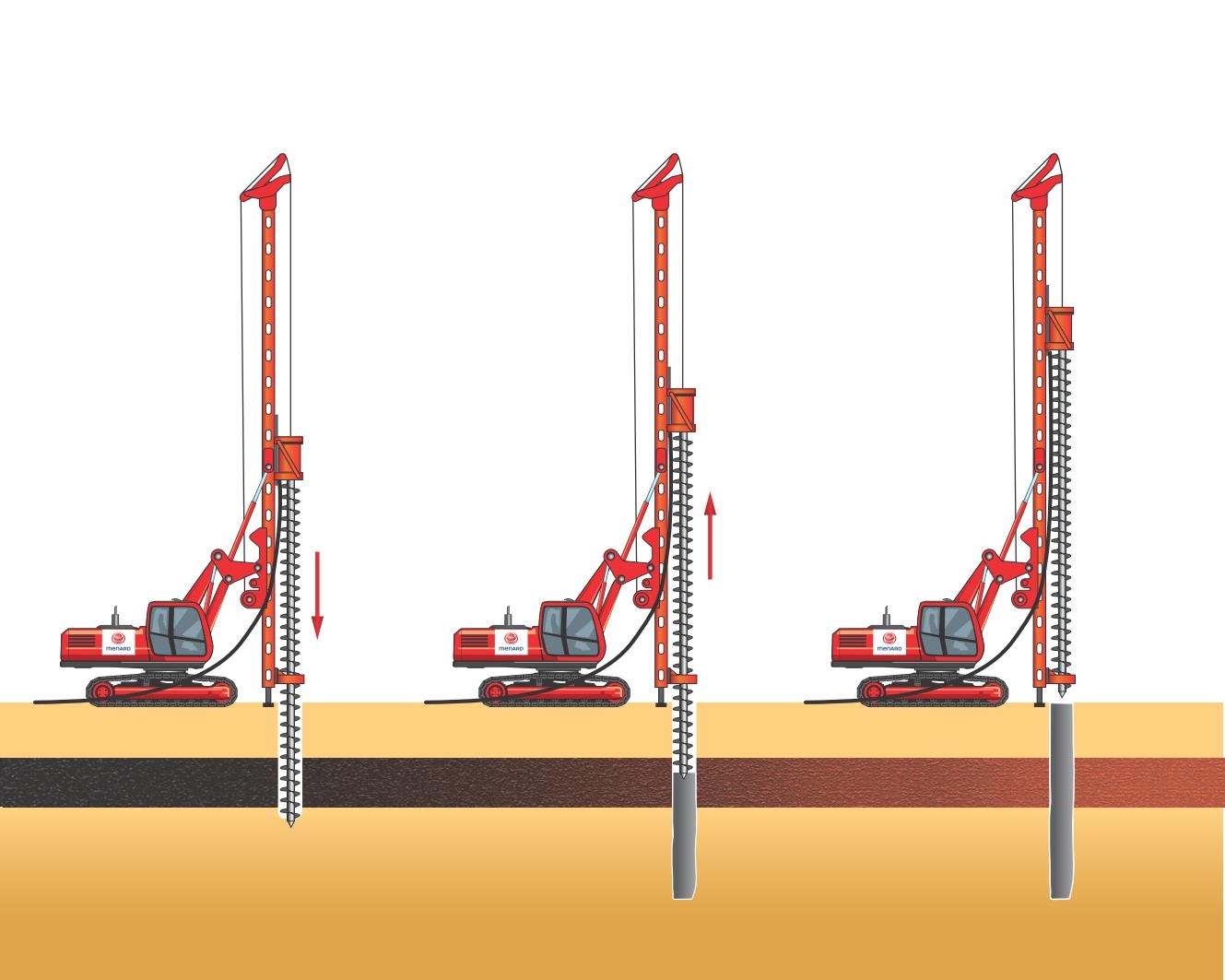continuous flight auger
continuous flight auger
CFA
CFA (continuous flight auger) is a single pass piling method, where a continuous flight auger is used to drill to depth. During the grouting phase, concrete is pumped through the auger simultaneously with the extraction of the auger from the ground.
Usually, a computer is used to monitor the concrete flow and pressure to ensure the pile integrity. Typical diameters vary from 12in to 48 into a maximum depth of 110ft. It is a fast and efficient way to install piles on soil or soft rock conditions. We offer machines in two different continuous flight auger configurations. Our cylinder crowd models can be converted to Bottom Drive CFA, which is a patented system by ROSCHEN. Our Cable Crowd models can be converted to Top Drive CFA.
CFA
Bottom Drive CFA
Bottom Drive CFA allows for deeper depths and higher torque.
The revolutionary patented system Bottom Drive CFA applies to the execution of continuous flight auger piles. The position of the rotary head at the foot of the drilling rig displaces the entire center of gravity of the equipment downwards, allowing a better use of the drill in reaching greater depths and drilling diameters. In this system, the drilling tool – auger – is part of the mechanism of torque transmission, so that notches are opened aligned along its full length. These notches fit the keyways connected to the rotary head which allow for the drilling when the auger is rotated. The Bottom Drive CFA equipment, when compared to those using the traditional system, has the advantage of being much lighter and more balanced, resulting in lower investment with superior performance. Other advantages are the use of friction pull-down for better penetration in hard soil and easy adaptation for the application of telescopic rod while executing excavated piles.
Features:
▪ Significant improvement of stability, providing greater security in the operation of CFA
▪ Optimal ratio of drilling depth x equipment weight due to lower center of gravity, enabling lower transport weight and lower transportation costs.
▪ Hydraulic pull-down on the rotary, centered to the drilling auger, improving the penetration in hard soils.
▪ Highly effective drilling torques due to the robust drilling head.
▪ Better efficiency of power due to the short length of hydraulic hoses that feed the drilling head, resulting in lower pressure loss.
▪ Lighter drilling masts as a result of there being no need to resist high drilling torque at the top.
▪ Higher Extraction force, resulting from the addition of push-up of the cylinder to the winch extraction force.







